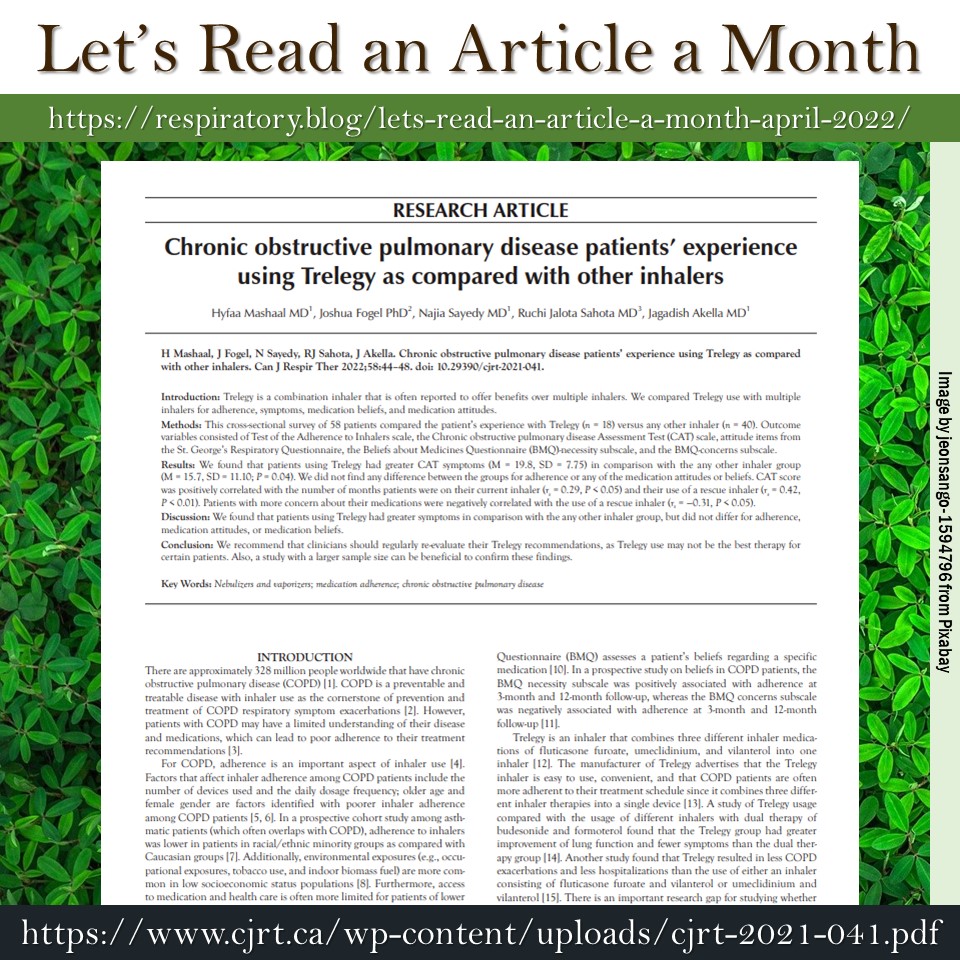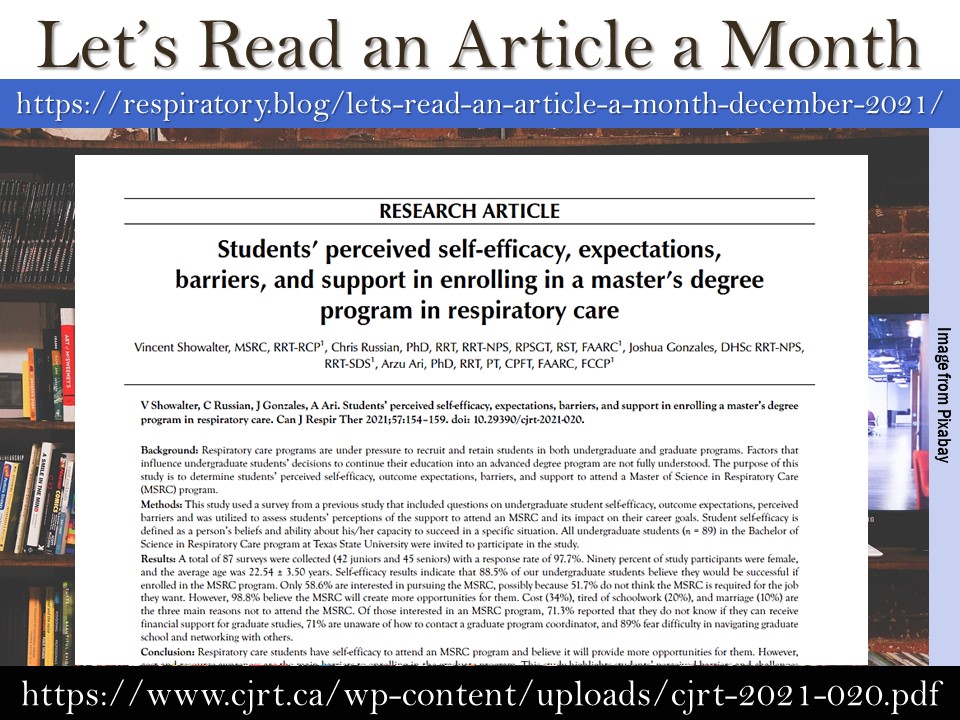
Every month I read an open-access article. I share the title and associated link with my followers to encourage clinicians to read more articles, stay up to date, and continue to grow.
The objective of this month’s paper is to “discover whether there is any difference for Trelegy as compared with multiple inhalers use for adherence, symptoms, medication beliefs, and medication attitudes” (p45).
Chronic obstructive pulmonary disease patients’ experience using Trelegy as compared with other inhalers
By Hyfaa Mashaal, Joshua Fogel, Najia Sayedy, Ruchi Jalota Sahota and Jagadish Akella.
Can J Respir Ther Vol 58. Published online at https://www.cjrt.ca on 25 March 2022
Link to the article: https://www.cjrt.ca/wp-content/uploads/cjrt-2021-041.pdf
A few notes about this article
- This article provides a quick review of COPD and Trelegy ( Fluticasone furotate, umeclidinium and vilanterol) (pp 44-45).
- I was surprised to see that there was an increased reported symptoms with Trelegy, and no difference with inhaler adherence when compared to the other medication groups (p 46).
- Very important to mention that this is a small sample study. The authors do state that different findings were observed with larger sample size studies; Check out number 27 and 28 items under the reference list:
- 27. Yu AP, Guérin A, Ponce de Leon D, et al. Therapy persistence and adherence in patients with chronic obstructive pulmonary disease: multiple versus single long-acting maintenance inhalers. J Med Econ 2011;14(4):486–96. doi: 10.3111/13696998.2011.594123.
- 28. Brandstetter S, Finger T, Fischer W, et al. Differences in medication adherence are associated with beliefs about medicines in asthma and COPD. Clin Transl Allergy 2017;7:39. Doi: 10.1186/s13601- 017-0175-6.
Happy reading and learning,
Farzad Refahi
April 1st, 2022
https://respiratory.blog/lets-read-an-article-a-month-april-2022/



